How to clean dishwasher
You know that feeling of opening the dishwasher expecting everything to be sparkling, but instead, you’re greeted with a weird smell or dishes that don’t seem quite clean? Yeah, it happens. Many people believe that because the dishwasher washes dishes, it cleans itself. It would be great if that were true, right? But the reality is that food scraps and water minerals quietly build up inside.
Over time, this not only reduces your kitchen helper’s efficiency but can even damage the appliance. But relax, no need to panic! Taking care of your dishwasher is simpler than it seems and makes a huge difference. Let’s talk about how to keep your machine always ready to leave your plates, glasses, and cutlery spotless, ensuring it works well for much longer.
Method 1: Daily and Weekly Care to Keep Everything in Order
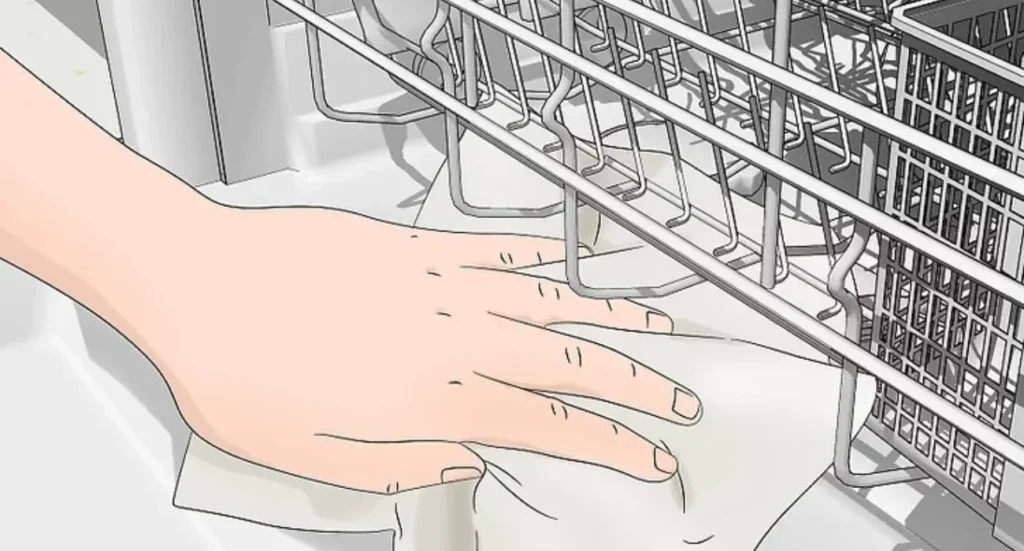
Keeping your dishwasher clean daily is the first step to avoiding bigger problems. It might seem obvious, but removing those larger food pieces from plates before loading them into the machine does a world of good. The dishwasher handles a lot, but large scraps can end up clogging the filter or getting stuck at the bottom. After each cycle, it’s worth taking a quick look at the bottom of the machine and removing any debris left behind. It’s simple care that preserves the filter and ensures water circulates properly.
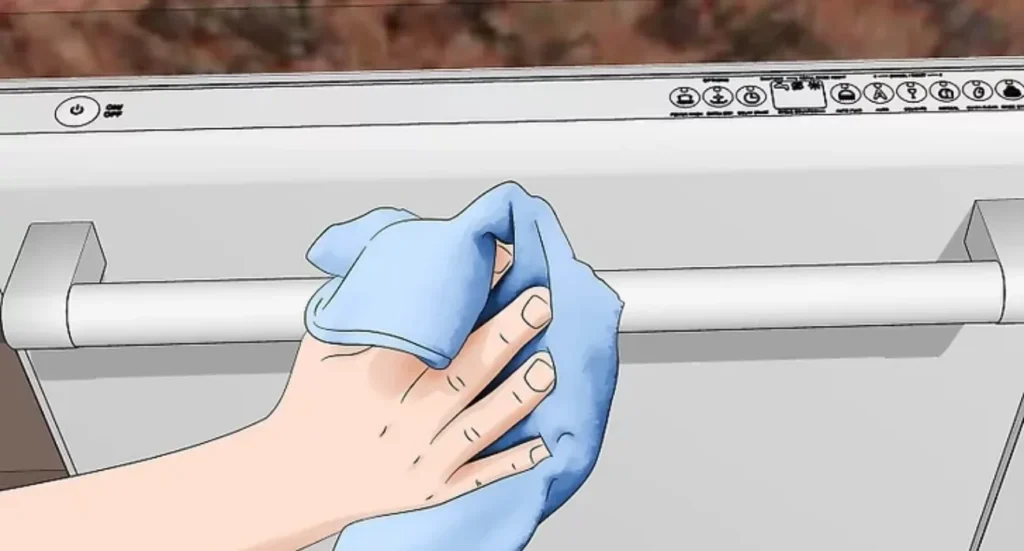
Once a week, set aside a few minutes for extra attention. Take a damp cloth with a bit of mild detergent and wipe the inside of the door, the rubber seals, and the handles. These nooks and crannies accumulate dirt and grease that the normal wash cycle doesn’t reach. Cleaning the seal prevents mold buildup and ensures the door closes properly, without leaks. Take the opportunity to also clean the control panel, especially if it’s greasy or has fingerprints.
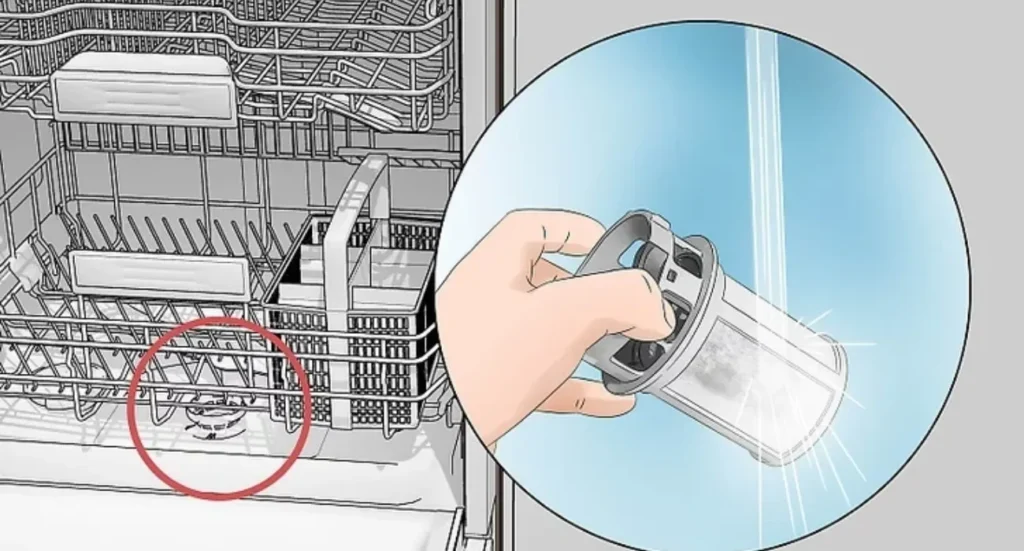
Another crucial point is the filter. It’s usually located at the base of the machine and is the silent hero preventing dirt from returning to your dishes. Once a week, remove the bottom rack to access it. Unscrew or unlock the filter (your machine’s manual can help here), disassemble the parts if it has more than one, and wash everything under running water. Use a soft brush to remove any stuck-on residue.
It might not be the most pleasant task, but a clean filter is essential for proper functioning and avoiding that unpleasant dirty machine smell. Once clean, just reassemble and put it back in place. This weekly care ensures efficient dishwasher maintenance and extends the life of your appliance.
Method 2: The Deep Monthly Clean Your Machine Deserves
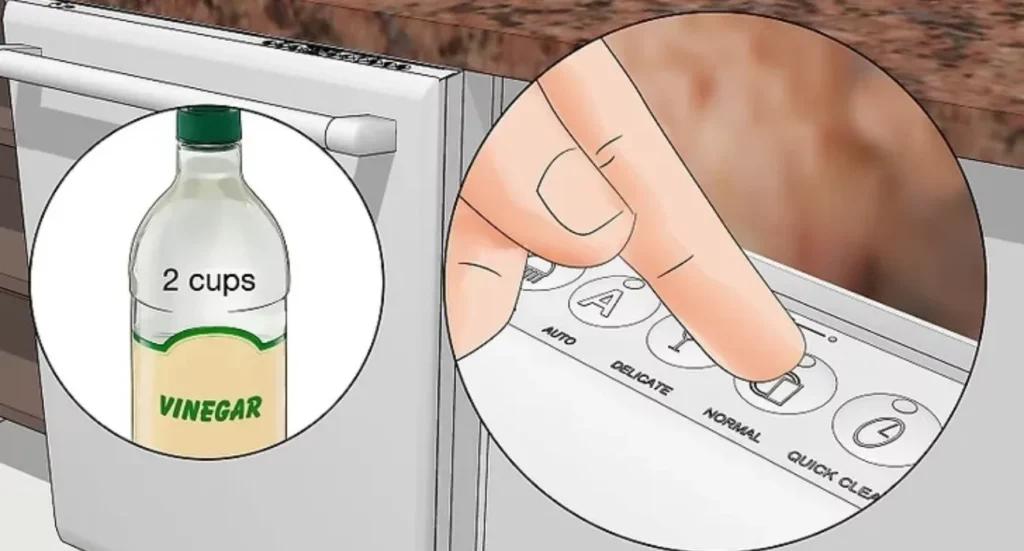
Beyond weekly care, once a month it’s time for a more thorough cleaning of your dishwasher. This deep clean dishwasher routine helps eliminate odors, remove mineral buildup, and ensure everything works perfectly. Start by completely emptying the machine. Then, place a dishwasher-safe container (like a glass measuring cup or ceramic bowl) with 2 cups of white vinegar on the top rack.
Vinegar is a fantastic natural cleaning agent, great for dissolving soap scum and mineral deposits, plus it fights germs and bad smells without harsh chemicals. Run the machine on a normal cycle with hot water and let the vinegar work its magic. If the vinegar smell lingers or if you notice any strange odors returning before the next month, you can repeat this vinegar cleaning whenever you feel it’s needed.
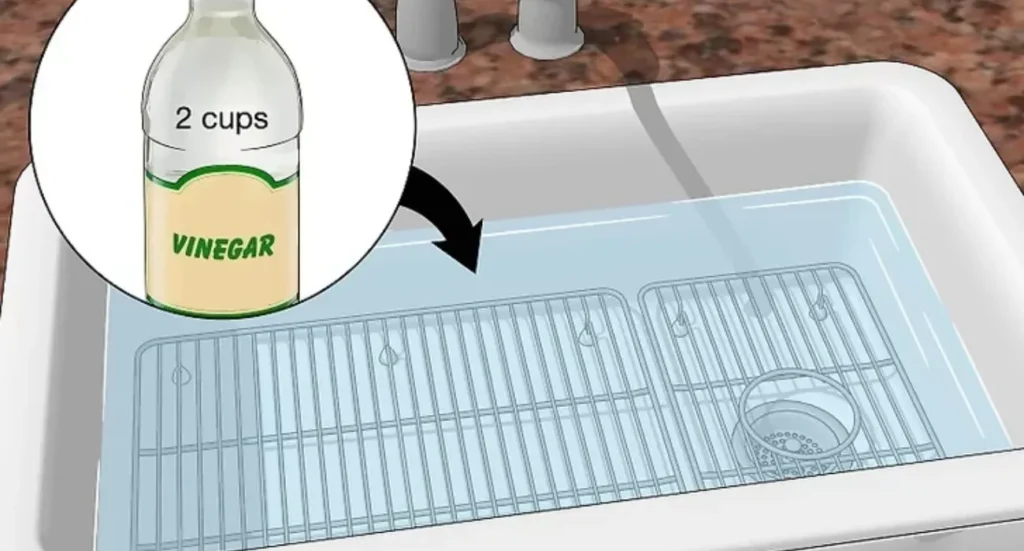
While the vinegar cycle isn’t running (or after it), take the time to attend to the racks and cutlery basket. If they are removable and small, you can soak them in the sink with a solution of warm water and vinegar. If they are large or fixed, wipe them down with a damp cloth soaked in the same solution. Check for stuck-on food debris and use a toothpick or a small brush to gently remove it.

The spray arms (the ones that spin and spray water) also need attention. Over time, the small holes where water comes out can get clogged with food particles or mineral deposits. Check if you can remove them (consult the manual). If so, rinse them under running water and use a toothpick, an opened paperclip, or a thin wire to carefully unclog each hole, being careful not to damage them. If they cannot be removed, clean them as best as you can while still inside the machine.
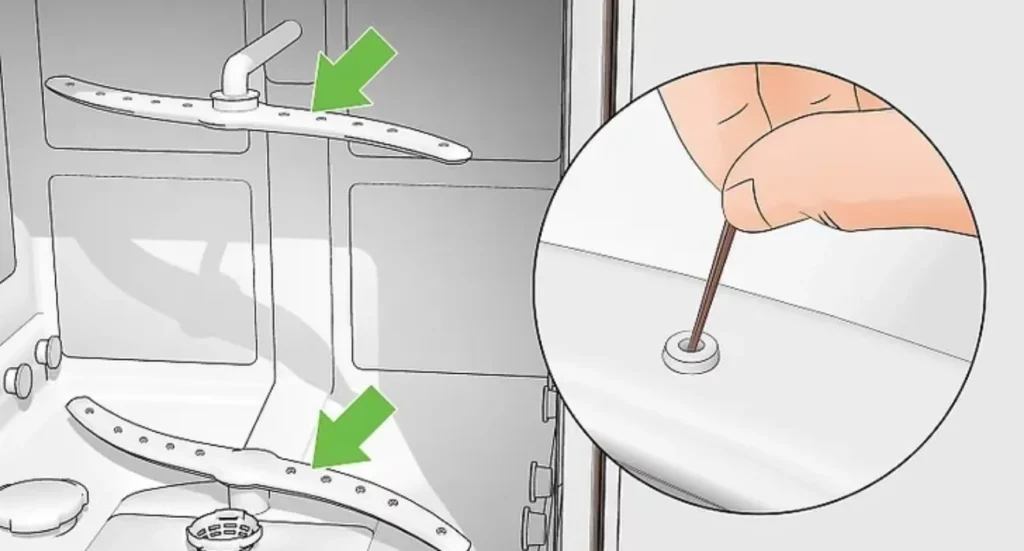
Don’t forget the door edges and the seal. These areas aren’t washed during the normal cycle and accumulate soap scum, food debris, and moisture. Wipe them with a damp cloth using vinegar or a mild cleaning solution. If there are tricky corners, an old toothbrush can help. Also, clean the bottom edge of the door, which tends to collect a lot of residue.
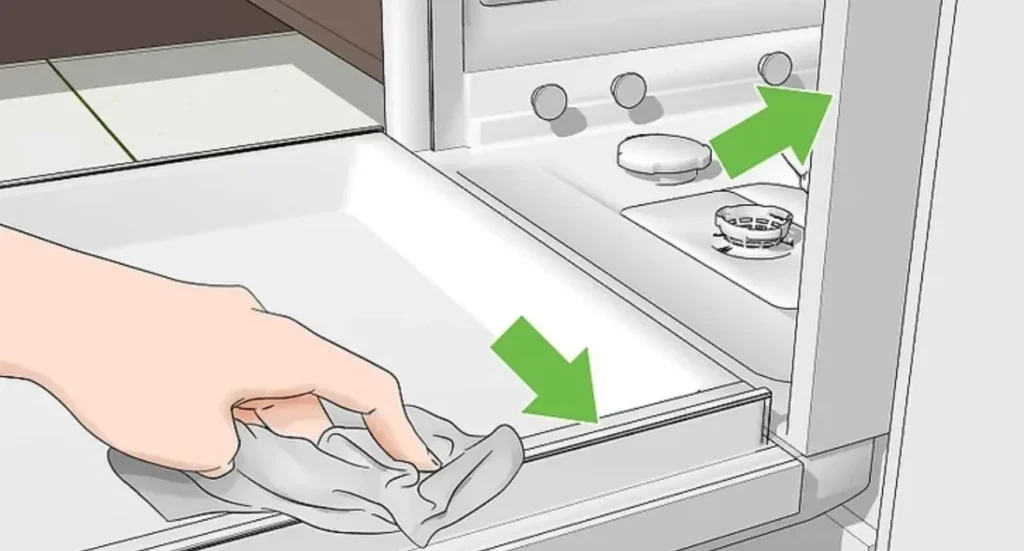
If you notice rust spots, especially if your water has high iron content, apply an appropriate rust remover (follow the product instructions and, if possible, consult a professional). Sometimes, you might need to apply a water softener to your plumbing or use a specific sealant if the racks are peeling. After cleaning everything, put all the parts back in their proper places, making sure everything fits snugly.
Method 3: Making the Exterior Shine

It’s not just the inside of your dishwasher that needs care. The exterior also collects dust, fingerprints, and food splatters. For general cleaning, prepare a simple and effective solution: mix ¼ cup of baking soda with about 4 cups of hot water until it forms a creamy paste. Baking soda is mildly abrasive, ideal for cleaning without scratching.
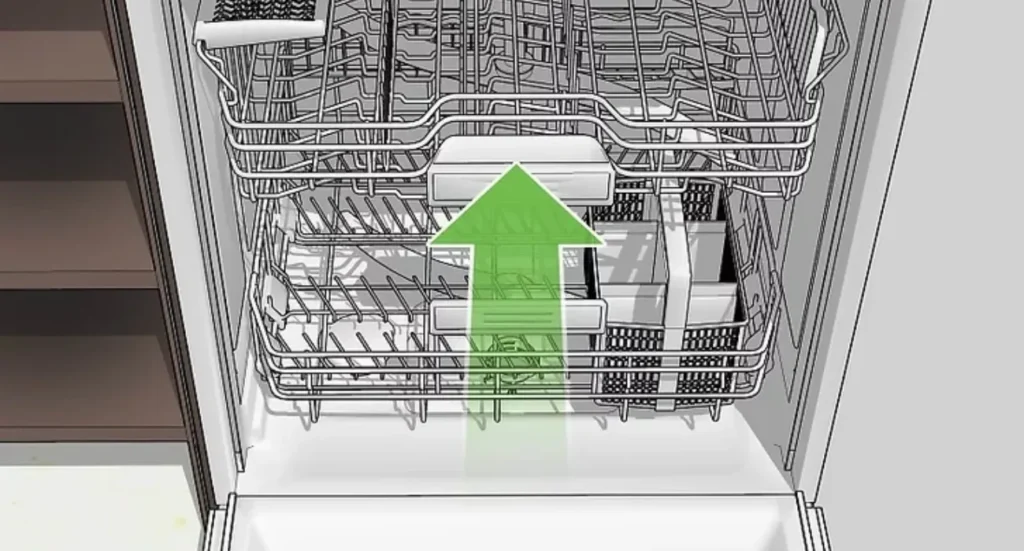
Apply this mixture with a soft cloth over the entire outer surface of the machine, including the door, controls, and handles. Pay attention to corners and crevices between panels where dirt likes to hide. If you don’t have baking soda on hand, a mild multi-purpose cleaner also works.
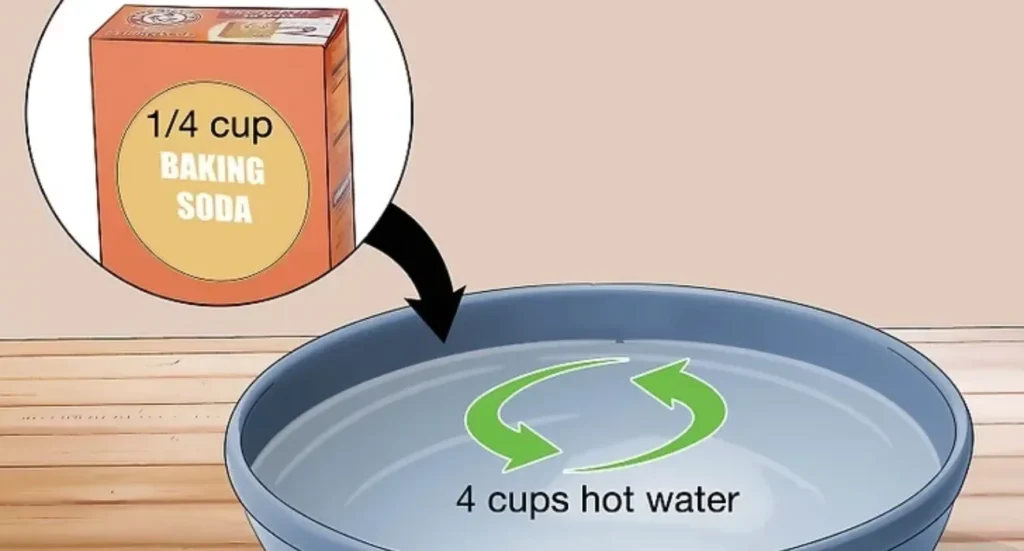
After applying the mixture, remove the excess with another soft, damp cloth. Rinse the cloth in clean water and wring it out well before wiping the machine to remove any residue from the baking soda paste. If your dishwasher is stainless steel, the care is slightly different to avoid scratches. Use a clean, dry microfiber cloth or a specific stainless steel polish.
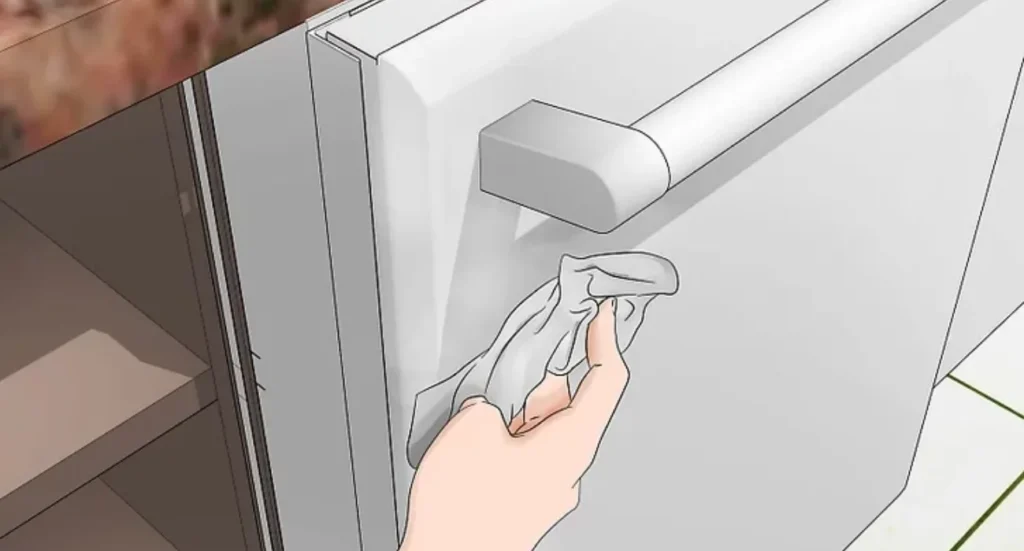
Apply the product to the cloth and wipe the surface following the grain of the metal (usually horizontal or vertical), using gentle, circular motions. This helps remove fingerprints and smudges, leaving the stainless steel shiny. Do this polishing whenever necessary, perhaps once or twice a week, depending on usage.
Method 4: Ongoing Care for an Always-New Dishwasher
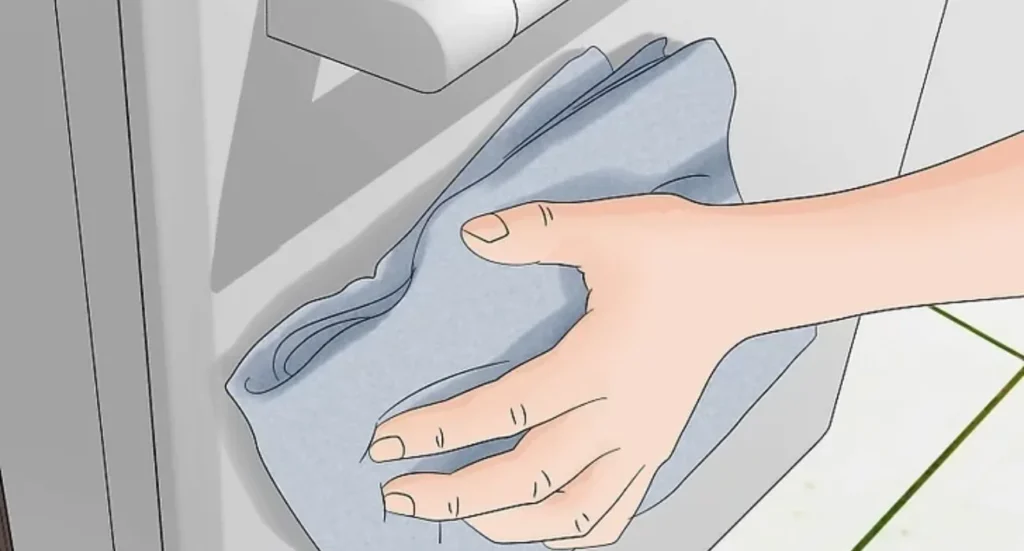
In addition to periodic cleaning, some habits help with dishwasher maintenance and ensure its long-term performance. Try to use the machine frequently, ideally every other day. This prevents food scraps from drying out and becoming harder to remove, and also keeps the seals moist and flexible. It might seem counterintuitive, but using the dishwasher often uses less water than washing the same amount of dishes by hand in the sink.
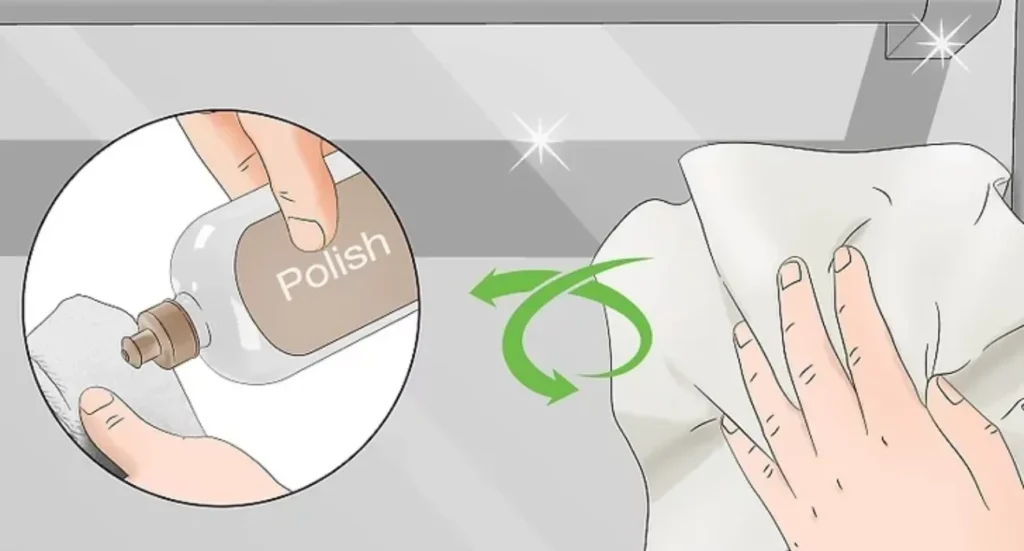
Before loading the machine, always scrape off excess food from the plates. You don’t need to rinse everything thoroughly, but removing large pieces helps preserve the filter and improves washing efficiency.
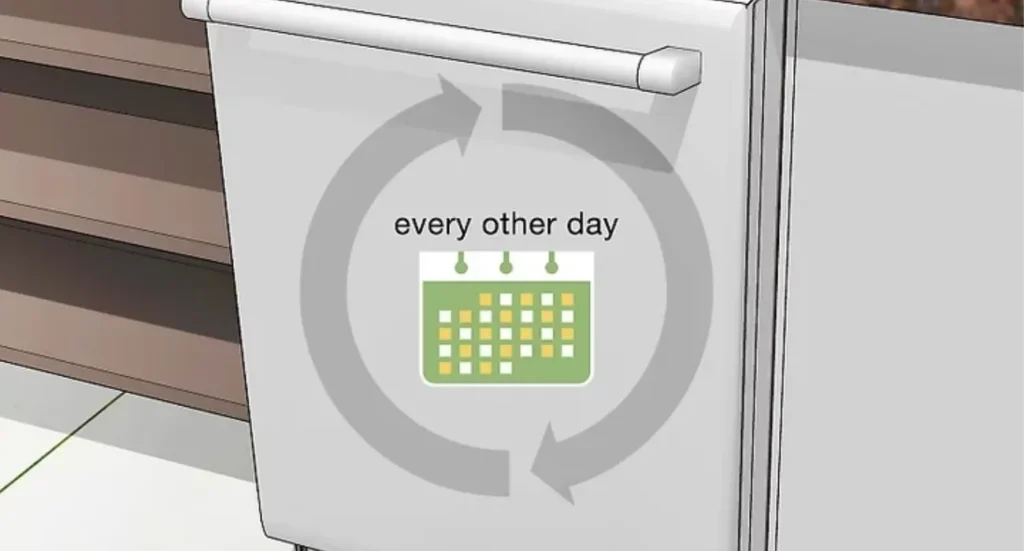
If possible, throw these scraps in the trash or compost bin. Rinsing dishes with hot water in the sink before loading can also help, especially if your home’s water takes a while to heat up. This way, the cycle starts at the ideal temperature. You can even plug the sink drain and collect this hot water for other uses later, like watering plants (after it cools down, of course!). Just be careful not to use water that’s too hot directly on your hands.

Finally, don’t forget the rinse aid. It helps water sheet off the dishes during the drying cycle, preventing spots, especially on glasses and plastics. Check the rinse aid dispenser once a month and refill according to the manufacturer’s recommendation.
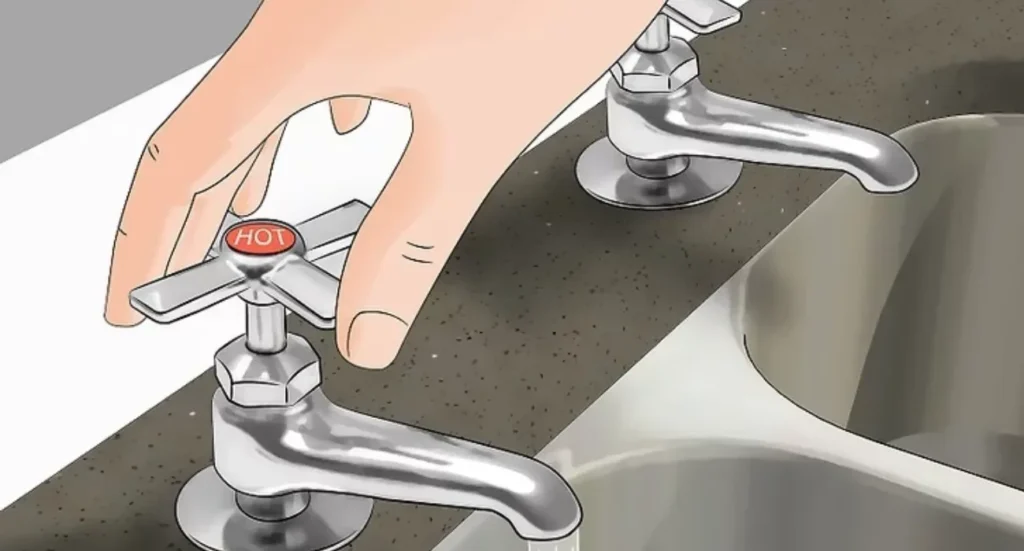
Open the dispenser (usually a small cap near the detergent dispenser) and add the product up to the indicated level. Solid rinse aids, in bar or powder form, are also available if you prefer. Using rinse aid correctly is part of how to clean a dishwasher completely, ensuring that final sparkle on your dishes.
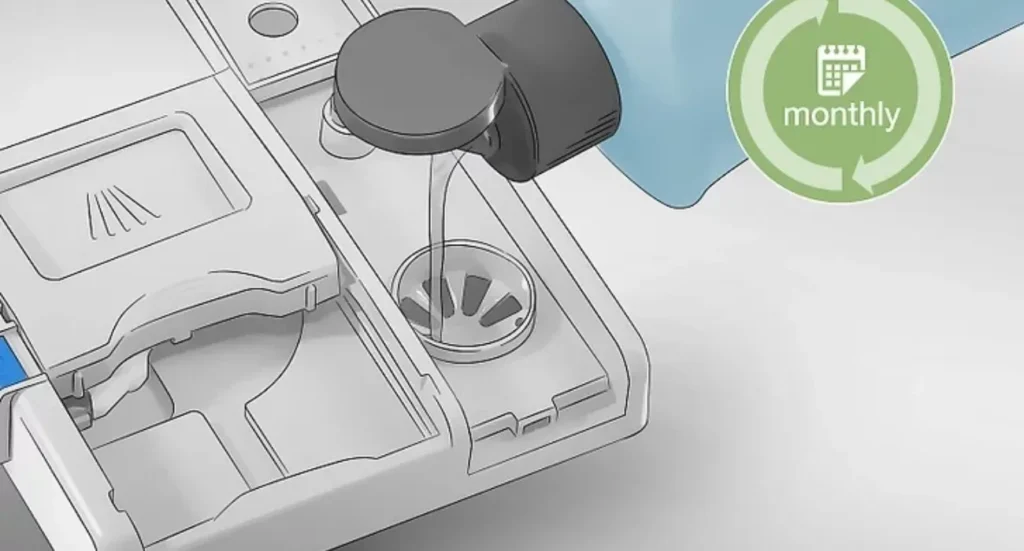
Frequently Asked Questions (FAQs)
1. How often should I clean my dishwasher?
To keep your machine running well and prevent odors, it’s best to follow a routine. Daily, remove large food scraps from dishes before loading. Weekly, clean the filter, the inner door, and the rubber seals. And, once a month, perform a deeper clean, like the white vinegar cycle, to eliminate mineral and grease buildup.
2. My dishwasher has a bad smell, what should I do?
Bad smells usually come from food particles trapped in the filter or other internal parts. The first thing to do is clean the filter thoroughly (weekly is a good frequency). If the smell persists, do the monthly deep clean with white vinegar, which helps neutralize odors and kill bacteria. Checking that nothing is obstructing the spray arms can also help.
3. Can I use regular dish soap or bleach to clean the inside of my dishwasher?
It’s not recommended. Regular sink dish soap creates too many suds and can cause your dishwasher to overflow, plus it’s not designed to clean the machine itself. Bleach can damage internal parts, especially stainless steel components, and can react with residues from other cleaning products. It’s safer to use products specifically designed for cleaning dishwashers or natural methods like white vinegar.y

